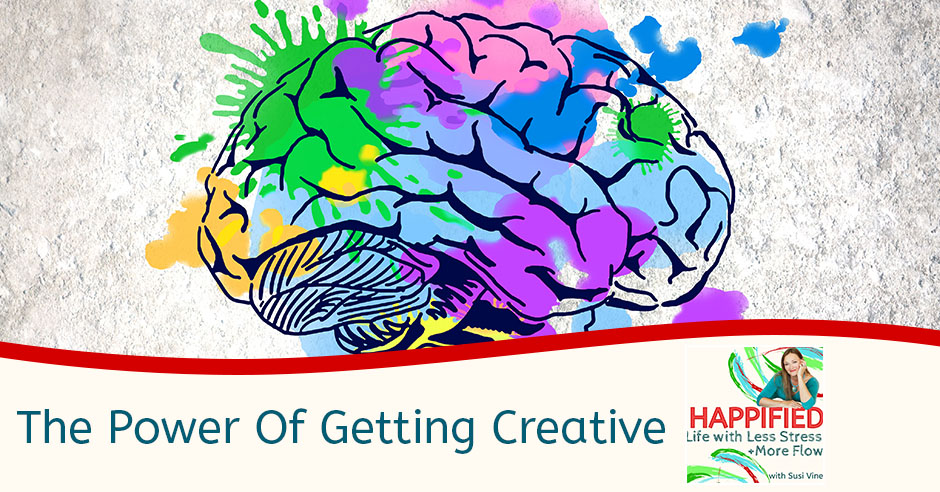
Despite everything that’s happening in the world today, there’s no excuse for not getting creative. Even though we have different levels of creativity, embracing this part of our humanity leads to self-confidence, inspiration, and connectivity. Join Susi Vine in her conversation with Bonnie Wallace, a Dance Teacher and Creative Coach who has developed online workshops to create the time and provide the spark for adults who want to tune into their creative selves.
In this episode, they talk about:
- Rules to foster creativity,
- Why structure can actually help unleash creative inspiration,
- The benefits of getting comfortable being uncomfortable
Learn more about upcoming workshops, online dance classes and connect with Bonnie through her website: http://bonniewallacedance.com Bonnie Wallace taps into her creativity through writing – no sketch pad or paintbrush required. We explore the myths and benefits of creativity and invite you to take your creativity off the page for more confidence and happiness in all aspects of life.
Watch the episode here:
The Power Of Getting Creative
You are here with me to tune into my chat with Bonnie Wallace. She’s a dancer and an advocate of tuning back into our creativity. We’re talking a bit about her work and the workshops that she has been hosting virtually on Zoom to help you reconnect with your creativity. We’re glad you’re here with us. Enjoy the show.
—
Welcome back. I am so excited to introduce you to Bonnie Wallace. Bonnie is a transformational dance teacher and creative coach that takes people from stagnation to stimulation through dance and other modalities with her holistic and invigorating approach. She incorporates many disciplines into her practice. Her movements benefit the whole bodybuilding, strength and grace. Her Getting Creative workshops take women from stagnation to stimulation to generate creative clarity and expression. She uses a variety of simple but profound activities and modalities to dig deep and find out what inspires her students. I’m excited to share this conversation about all of these forms of creativity. People think, “I can’t draw or paint. I don’t want to tap into that.” I love that this conversation includes movement as well as other forms of expression. Thank you, Bonnie. I’m excited to have you here with me.
Thank you. I’m excited to be here. I appreciate you offering this time to me.
I love that you’re creating these workshops at this time at which we’re still hanging out at home and feeling a little disconnected. I talked with someone who’s created these huddle events where total strangers come into a room and ask some interesting questions and then spark a conversation. Although we are experiencing a little bit of Zoom fatigue, when we engage a different thought process, there’s good stuff that comes out of it. How did this come to you?
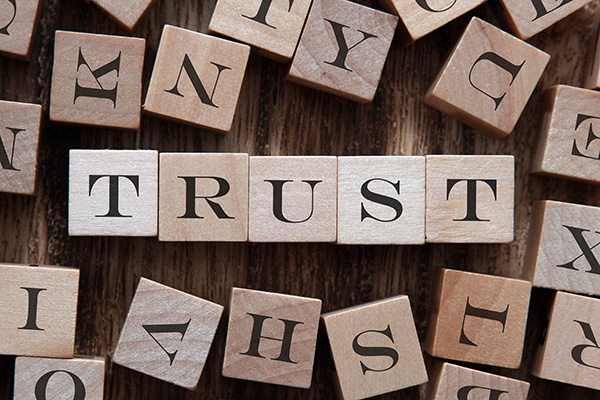
I was teaching middle school children creative writing. In doing that, I discovered it was very beneficial for me. I don’t think the kids appreciated the work as much as I did. I got more stuff out of it. Once COVID hit and we’re all behind the screens and locked in, I thought the stuff that I was doing with the kids could resonate for adults. That’s what triggered it for me. As far as the dancing goes, I’ve been dancing for a long time and teaching dance for ten years in the community, at dance studios and whatnot. After COVID hit that too, it became an online activity. I’ve got those two things going. One of them I’ve been doing the dance for a long time and the other one hit me having taught the kids and I could translate that for adults.
We have to get resourceful and figure out a way like, “My in-person classes are on hold indefinitely. How can I keep my community engaged?” You’ve got your group of students that have been showing up and dancing with you. We need these opportunities to carve out time for ourselves. It does the body good but that creative expression, play, movement, and community of people who share their love of dance, you want to keep that going. I love that you decided to take that online. Those classes have been going all the way through the course of 2020. When did you start working in these workshops?
The workshops came about a little bit later. I got involved in Collaborate, where I met you and that opened my eyes to new opportunities. That’s what I realized I could be doing more than just the dance. There are other opportunities out there. I thought, “What is that?” The classes for the children and the online thing merged for me.
That’s such a great example too, when we are looking for solutions or in that open frame of mind, those creative ideas do come to us. If we stay in that fixed mindset like, “I have to wait until my studio can open again and life sucks.” Instead, you’re like, “How can I continue to serve and build my community? How can I make connections with other people who are doing great things?” What I love about the Collaborate community too, is that it’s many people who are engaged and growing, pushing ourselves to come up with more ways to serve. It’s great to be in a community with that inspiration.
Technology has made it available to us. We’re lucky that we’re living in this technological advancement and can use it.
You can do so much more if you focus your creative mind on just a single goal. Share on XPeople who end up in business, we end up starting a business because there’s something that we’re passionate about. We also have to be good at running a business. We have to become better at managing tech solutions now that it’s online. There are more aspects, but it keeps us on our toes and the brain engaged and growing. That spirit of play, I wanted to come back to that opportunity to be creative. As you were recognizing that worked for the middle school kids, although they didn’t have the full appreciation, they will in a few years when they know less. That opportunity to play, have fun and make space for creative problem solving is something that people don’t give themselves permission to engage in. There’s a lot on our lists. There’s a lot that we try to hold ourselves to then that leads us to be at the end of the list. Our self-care, our fun time gets pushed aside so we can take care of business. In your opinion, what are some of the benefits of being creative?
There are a lot of benefits, but going back to your first point about not taking time for ourselves. One of the things is that there are some myths about creativity and that is you’re either a creative person or you’re not, you’re right brain or left brain. If you don’t draw, paint, sing, dance or whatever it is, you’re not a creative person. People are like, “That’s not for me, I’m not a creative person. I’m not going to do it.” We are all creative. Being creative is about making connections and also trusting yourself. Those are the two things you have to do.
I personally always wanted to describe myself as a creative person or an artist. I had a hard time with that even as a dancer. I could never get my head around, “I’m an artist.” I always felt inside of me, “I want to say, “I am an artist and a creative person.” It took me a long time to be able to be at peace with the fact that, “I’m a creative person and I can do creative things.” If you went into a classroom of 1st or 2nd graders and you asked them, “How many in here are creative? How many of you are artists?” They’ll all raise their hand. You go to college or even a senior in high school. It maybe 1 or 2. We get that creative streak almost beaten out of us but not literally. Especially in school, there’s a right answer and a wrong answer. You either get the question right or wrong. There’s no middle ground. I too dealt with that. I realized that being creative is about making and taking things, refocusing them and making it happen. I also realized I have to trust myself and allow that to be.
It’s almost going back down the timeline to that point at which we felt we had all this possibility where we didn’t put limits and say, “I’m not creative because I don’t do it right.” Along the way, we get these influences or feedback. I love to call it inner gremlin. Like Rick Carson starts to say, “That’s not what you’re good at. You better stay in this lane. That’s not your lane. You don’t get rewarded in that lane. You better stay over here.”
My kids went to a wonderful art school, but they taught you exactly how to paint a particular picture. They were going to present some of their art in the local coffee shop. I brought one of the pictures that my son did and it was about the evening sky. There was snow on the ground and smoke coming out of the chimney. It was really pretty. I happen to like this one. The teacher said to me, “We cannot show this picture.” I said, “Why not?” She said, “This picture was supposed to be done during the daytime, but I allowed your son to paint it at night and with snow. It’s not supposed to have snow and at night. There’s no way I can show this picture. My boss would fire me.” I was like, “Let’s paint a different picture.” I could not believe it. Here they are going to an art school and you were supposed to paint the picture exactly how it was in the booklet. She told me I couldn’t pick that picture.
My mind is blown. We wonder why we have so much recovery to do when it comes to giving ourselves permission to play and color outside the lines.
At least in the class, she allowed him to do it. I’m grateful for that. She wasn’t like, “No, you can’t make that at night and put snow on the ground.” She didn’t do that, but still, that conditioning where it’s like, “We cannot show that picture. That was not supposed to have snow and to be at night.” There are rules for creativity. I told you, number one, you have to trust yourself. You also have to trust that other people are not going to judge you if you’re in a creative environment with other people. They’re not going to say, “You can’t make that picture a night picture.” That’s so stupid. You can’t have that. Those are the two rules of creativity.
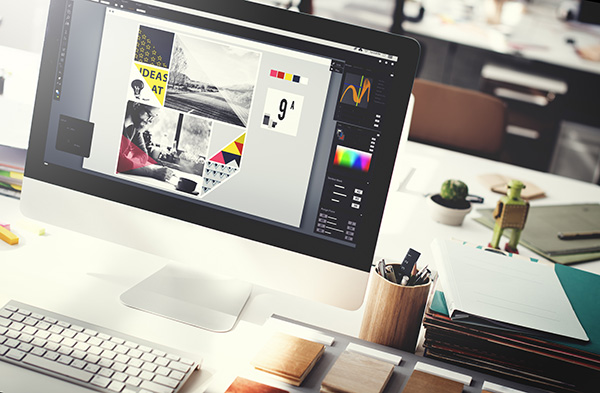
Sometimes having a structure in creativity works better than just do whatever you want. Doing whatever you want is a little overwhelming. It’s a little bit too open-ended and people don’t know where to start. A lot of times, the creative prompts are good. Sometimes almost thinking in the box is a way to get more creative. It depends. I’m going to throw that out there because I know that there are a few myths about you open the flood gates and do whatever you want. That’s going to spur creativity and sometimes it doesn’t work. There are processes.
That’s helpful because people might feel that. I’ve had those moments and I have a Bachelor of Fine Arts. At the age of 44, I’m working on feeling like I am a creative person. There is another case in point. We’ve all got some stuff to work through. What have I been doing in 2020? I’ve been trying to build a business. I sit down in front of an empty canvas and I’m like, “I don’t know.” If you feel like you’re not creative because you don’t have that image spring to your mind. You’re like, “This is what I want to create.” That can start to hold some people up too in and of itself. Let’s start with a pump and work with the framework and then decide what rules we want to break and go for it.
There have been studies about this. For instance, they’ve told children who were looking at a clock, “You see the second hand go around.” They ask the kids, “What else could you use for a second hand going around rather than the stick?” They might say a pretzel or a toothpick or a pen. If you ask them, “What animal could you use or what is something alive that you could use?” It gets them thinking differently. You would never think like a snake or a worm or a cat’s tail. It wouldn’t necessarily come to you until you ask a different question. It is about asking the right questions sometimes. That’s where you need to go to focus your mind when you think of being creative. You’re thinking like so open-ended. Focusing can make you even more creative. We know that too with problems. People want to solve a problem. They’re focused on solving a problem. What happens? They do all things to create solutions to that problem. Sometimes it doesn’t work and they end up creating something else altogether. In the focus of solving something, they get very creative. There are a lot of ways to look at being creative.
I do think that we need that permission to heal, take some time and recognize. That first rule that you have. You have to trust yourself where a lot of us have gotten hung up. We start to hear that voice. Be it the teacher or the parents saying, “You colored marker on the walls.” Whatever it was that we did and broke the rules. We stopped trusting ourselves. That’s why it’s so wonderful with this opportunity to have a workshop, have permission, play, color outside the lines, and get validated. Whatever choice you make, it’s a great choice. Make your choice and another choice after that. You mentioned there are some myths about creativity. Are there some others too that we haven’t?
This idea that there is a right brain and a left brain. The right-brain people are creative and the left-brain people are more logical. That’s unequivocally not true. They’ve done the brain imaging and whatnot, they know that to not be true. When you’re being creative, you’re using both right brain and left brain. It’s all working and everything is lighting up. Being creative is also valuable to our health mentally, emotionally, and physically because it does use so much neurological gray matter that’s happening. They’ve done studies also with seniors who have said that being creative is the single most beneficial thing that they could do in terms of extending their life and reducing mortality. I know a lot of people want to do crossword and Sudoku puzzles, and that’s good. Even staying physically active is good, but it turns out that being creative gets everything going. You feel proud of yourself. It gives you more confidence. You have a purpose. It reduces stress. It does do it all in one activity. They covered that.
That’s powerful information to have too that it’s not you’re only using your right brain. I always get it confused, which one is which.
It seems the right brain should be more logical, but it’s the opposite.
It does stimulate all the faculties, not just that out of the box thinking. When you give yourself that space, other solutions or connections start to come together too, which is what I always love about getting into that zone.
Getting out of your comfort zone may be scary, but it’s the only way to grow. Share on XThe other myth we talked about is that you need to go out into the middle of nowhere and clear your mind of everything before you get this inspiration. I can see where that happens because people get those eureka moments, but creativity comes from the input. You want quality input, ideas, images and make connections. Oftentimes what happens, you’re in the shower or driving and not thinking about it. You have that eureka moment, but it’s not because you specifically went out to think about nothing to clear your mind. You’re intaking things. When you relax into it, it bubbles up into you. I know some people think, “I’m going to go away for a week and get creative and just sit in silence.” Meditation is good but you do need input or stimulus to be creative. It doesn’t happen out of nowhere. That might be one of the myths that it happens out of nowhere.
That goes to what you were saying before. With a couple of prompts, a little bit of structure, then we feel safer to explore and start pushing the boundaries. It’s a little less intimidating than sitting there and being like, “I don’t know where to begin.”
It gives your mind a place to focus. It’s like, “What are you thinking about?” It’s hard to multitask and think about everything. You need some direction. Those are a couple of the myths. There are a lot of benefits like I talked about health. A lot of times, they say being creative will save you money. If you’re creative enough to fix things that could save you money, but in my opinion, you feel more filled up. A lot of people shop to fill themselves up. Even in the time of COVID, you’re online looking for that special something like, “What can I buy? What do I want?” When you’re doing creative things, you’re spending your time with that and it fills you up. You’re like, “I don’t need or want anything. I want my paper, my pen and my crayons,” whatever it is. It could help you save money that way.
That’s how we fall down that rabbit hole of shopping online. We have extra time. I’m already here or how do I need to round up this basket so I don’t need to pay shipping and keep on clicking. If we have that fulfillment elsewhere, that’s terrific. We do not need more stuff.
That’s another benefit. It can also make you more productive is the other thing that creativity can do. It solves problems. It can make you more productive. It can give you more inspiration. You feel like you’ve done something. When you do one thing, you’re ready to do something else. It goes. The tree starts to grow.
It’s the momentum. I love to try to eliminate that. Even emotionally, we get stuck in these lower vibration emotions and it’s a matter of inertia. It takes something to get us out of that. If we’re in that momentum of possibility and creativity, then we’re working at a higher level. Vibrationally, we’re calling in more things we’re engaging and curious. I love what you were saying too about how it can help us feel better about ourselves. Having self-esteem or feeling worthy is an issue that many of us struggle with. It’s maybe not okay to talk about. We don’t feel like we can look for resources or support in those areas. It’s an inside job. Whereas when we can tap into something and be like, “I made that.” It’s evidence. I can make or create things. I can follow-through, whatever it is. I can come up with something new and unique. In the next experience, you’re like, “I can come up with something new and unique for this too.” Keep that going.
I find that happens in my dance classes a lot. People will start with me and dance. They’ll feel like they have two left feet or this is very new to them. Once they do one class and they finish it, they’re like, “I did a lot of movement. I did that.” They come back the next time and it’s that much easier. They start feeling stronger in their body and having more balance or grace. They know what’s coming in the class. They get more confident and can call themselves a dancer. It’s a big and good thing for people. It does give you that confidence, which spills over to other things, not just dancing in your living room with Zoom.
We all should be doing more of that.
Staying active in the time of COVID is tough too. Nobody’s going to the gym. Things are opening up, but still, it’s been a tough 2020. It’s the COVID 19 spread.
People that were working from home, and I haven’t seen a number yet to disprove this. I’m still quoting the same thing and this was a shift that happened early on. On May or June 2020, I saw that American workers were clocking in three hours more per day on average. This number came from a virtual private network company. They were clocking the work hours of employees who are logging into systems from home, which blew my mind. I’m like, “We gave up the commute. Don’t we have extra free time?” Parents who are working from home are also having to manage their kids’ schoolwork plus, “Maybe I’m more distracted. I should spend more time,” or bosses and management were a little skeptical. Those boundaries got blurred. The email notifications are going off at after-hours. Anything to put into our schedule for self-care to put parameters on that. I’ve been trying to talk people having a dance break after work, replace that time of your commute. That debrief time between work and personal life with a dance break and put on music that you can’t help but move to and move for fifteen minutes after you’ve been stuck in a chair for 8 to 10 hours.

Doing it and thinking it are two completely different things and getting the motivation to do it, that’s why people had to go to the gym. It’s hard to do this stuff at home. We could all sit down and do 20 pushups, 20 sit-ups or stretches. We don’t need somebody to show us how to do some crunches. We can all lie on the floor and do this. For some reason, we don’t have the motivation or the impetus without somebody saying, “Let’s all do this together. We’re all going to lie down on the floor or do twenty crunches.” It’s a great idea. Maybe you want to lead a fifteen-minute dance workout.
That would hold me accountable and be better about my own suggestion. I’ve recognized too that is one of the ways in which I am accountable. If I tell someone I’m going to do something, then I will save face by following through. Sometimes I build that in, I’ll set myself a goal, and then I’ll tell someone I’m going to do it. There are more ways in which I can use that to my advantage. Just recognizing what motivates us. Some people’s accountability is the opposite of help. You’re going to rebel against it. “You don’t get to tell me what to do. I’m not going to do it because you brought it up.”
Reverse psychology like, “Don’t you ever do this.”
Any way in which we can get to know ourselves better, get those insights. If that’s journaling or moving our body, which like you were saying, we so desperately need to do more of, especially as much more time as we’re spending sitting in front of screens. Exercising those creative connections helps us know ourselves or understand what we can be capable of. You say that first dance class can be completely overwhelming and like, “I don’t want to go back.” If you ride it out for a couple of weeks, I loved what you said, “I understand what’s coming next. I feel more comfortable,” and start working outside of my comfort zone more easily. That is something that people are not comfortable being uncomfortable.
We’re in that comfort zone. Even though it might not serve us, life pre-COVID wasn’t the healthiest and happiest. Everybody’s been waiting for a year to get back to normal. If we expand our zone or work on the edge of it and grow, what could we create for ourselves? We tend to feel like, “No, I’ll stay here. It’s comfortable.” Even though it’s like the frog in the pot, the water is getting a little hot, but it’s not uncomfortable enough yet to make a change. Sometimes we need that little push.
Getting out of your comfort zone is the way we grow. It is scary, but it is the way we grow. There’s a lot of research about that. Back to your point of doing things, I do have an online PDF that I could share with your audience. To your point of getting to know yourself, that’s what it was. That’s what triggered that idea in my head. In this PDF, there are three writing activities. It is a way to tap into yourself because you have the answers. That’s another thing. We all have the answers inside of us, but getting to the answer is tricky. These activities are some ways to find those answers and the writing prompts. They’re very simple. It’s a way to get your mind to think a little differently and to reflect or to find that inner genie. In there, you know what needs to be done or to do and asking the right questions, listening and having a way to get to those answers is important.
Nothing would necessarily come to your creative mind without asking the right questions. Share on XTo that point, the better we know ourselves, the more that we can trust ourselves.
The more you trust yourself, the more creative you are and the healthier you are. It just snowballs.
We’ve got that upward spiral going into momentum.
The more you create, the better you feel about yourself. The better feelings, the more you create. The more you create, the more things happen and so it goes.
It goes the direction we want to be moving. How can people find out about your workshops?
My website is BonnieWallaceDance.com. In the menu, under Events and Getting Creative, that’s where you can download the PDFs. You can sign up for a free class and find out about workshops. It’s all there if you go to BonnieWallaceDance.com.
Whether it speaks to getting your body moving, coloring outside of the lines, all of the above.
Your readers are also welcome to sign up for a free online dance class. They can do that at Bonnie Wallace Dance too. They can see the schedule and register and sign up for a free class. You need about 6×6 minimum space, the Zoom, the computer and a place that you can move, the comfortable clothes. If you have a mat because we do floor work, you can bring it. Aside from that, you can Zoom in and move with us. It’s a lot of fun.
I do think that even when we get back to normal when we resume real-life interactions, some of this is going to stick with us. When you don’t have to drive, it’s that much easier. It’s one less hurdle to overcome to get your body moving in a dance class. To sit down and give yourself a block of time in which I’ve committed to Getting Creative. I’m going to play around and work with some different media and give myself space. This online platform, even though we’re a little cranky, there’s so much benefit. I hope that this continues to bring down barriers.
I must admit for the dance, there are some hurdles. Even after I left the dance studio and came on Zoom, I did lose quite a few of my students who could not transfer online for different reasons. They didn’t have a good computer, place in their home or they have a small apartment, whatever it was. They’ve got kids running around or dogs. Their mindset too, I don’t know if you’ve ever gone to the gym or a class, but getting to the studio is sometimes the hardest part. You’re like, “Do I want to go?” Once you’re there, you feel so good. That energy was missing a bit from the online. I must admit it’s not the same. Those students and I’m getting new ones all the time who have never danced with me in the dance studio and who can find the time or space both mentally and physically and can Zoom into this are enjoying it and benefiting from it. It’s a paradigm shift. We have to make ourselves available mentally, emotionally and physically to this new online reality.
Recognize the benefits that we can get from it rather than the friction.
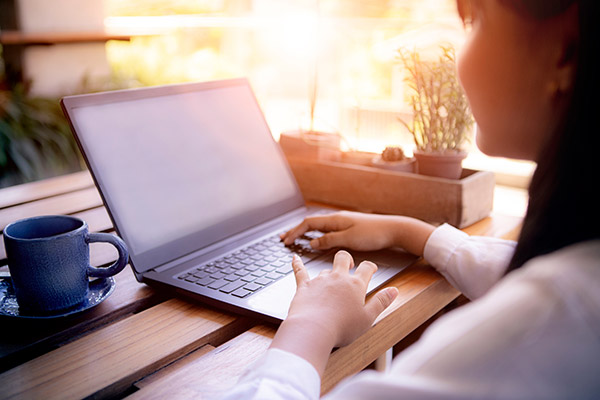
I agree with you 100% not having to commute is so nice. The comfort and privacy of your own home is easy. I don’t know what I’ll do when the studio is open. The studio here is open for outdoor classes, but you have to wear masks. I’m not inclined to dance with a mask on, but presumably that’s going to go away. I’m not even sure when I want to get back into the studio.
I’m in much the same place as other things are opening back up. My one-on-one or the bodywork clients that I had stopped seeing months ago are reaching back out. It’s like, “I don’t know if that fits in my schedule.” We’ll see what shape this takes as we move forward. It continues to be malleable. I love the opportunity to be flexible and to have that open mindset and say, “What shape is this going to take?” I’d love to ask if you have any practices that you use when you start to feel stressed that help you get centered or come back to balance.
My dancing is the biggest thing and we do a lot of breathing in my dance class. I’ll always take a deep breath, fill up my lungs and then let it go. That’s a simple or basic thing that people do.
That’s easy to forget. Thank you for the reminder.
Big breath, fill up your lungs and your whole body. A couple of them are important and then movement, walks, anything that gets the adrenaline going is excellent therapy. In terms of my creative writing stuff, which is a little bit different, one of the things I love to do is acrostic poems. It is when you take a word or a phrase, but usually, it’s one word and you write it vertically. It’s like dance or whatever if I’m in the mood. I put DANCE vertically and then each sentence starts with those letters. D, dancing is a lot of fun. A, always moving is a great way to enhance your body. N, never quit. When I feel stuck or I don’t have the answer, or I don’t know what to do next, whatever it is, I will do an acrostic poem. Whatever the problem is if it’s money, kids, or stress, and I will do an acrostic poem on that word or ideas. It’s going to take shifts in my brain.
They recognized it in studies that it takes us out of that reflexive stress response, that amygdala response, and puts us back in our prefrontal cortex. Writing is exactly what they recommend, but using words, I love that creativity, that ability to have expression. That’s perfect. I’m going to do acrostic poems. That’s my new favorite tip.
Those are the kinds of activities that I do in my workshops. It’s simple again for like sixth graders. The thing is, when you do it, you can come up with something beautiful and profound, even though it’s like a simple acrostic poem. As adults, we’re going to have a little more subtleties and whatnot than children, but it’s all good. It comes out beautifully and profoundly, even though it’s simple writing or poetry poems.
We all have the answers inside of us, but getting to the answer may be tricky. Share on XSometimes simple is the best place to start and thing to come back to. Thank you for creating these spaces. I love the work that you do. I’m so glad you were able to join me and share these ideas. People can check out your website, grab creative activities, download that they can pick up.
It’s the Creative Genius Starter Pack. The download is there.
Thank you so much. I love the work that you’re doing and thank you for joining me.
Thank you, Susi.
Important Links:
- Getting Creative tab – Bonnie Wallace Dance
- http://www.BonnieWallaceDance.com/
About Bonnie Wallace
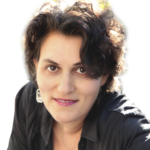 Bonnie Wallace is a transformational Dance Teacher and Creative Coach that takes people from stagnation to stimulation through dance and other modalities with her holistic and invigorating approach. she incorporates many disciplines into my practice. Her movements benefit the whole body, building strength and grace.
Bonnie Wallace is a transformational Dance Teacher and Creative Coach that takes people from stagnation to stimulation through dance and other modalities with her holistic and invigorating approach. she incorporates many disciplines into my practice. Her movements benefit the whole body, building strength and grace.
“My students are women who have danced in the past and want to continue the practice in a safe space. Many current dance classes in the market are geared toward a younger generation where the movements are athletic and include a lot of gyrating and fast-pasted steps. Midlife women do not resonate with these jazz classes and are grateful to have found my class, where we can dance in fun and beautiful ways, in a more mature setting.”
Her “Getting Creative” workshops take women from stagnation to stimulation to generate creative clarity and expression. She uses a variety of simple but profound activities and modalities to dig deep and find out what inspires her students.
